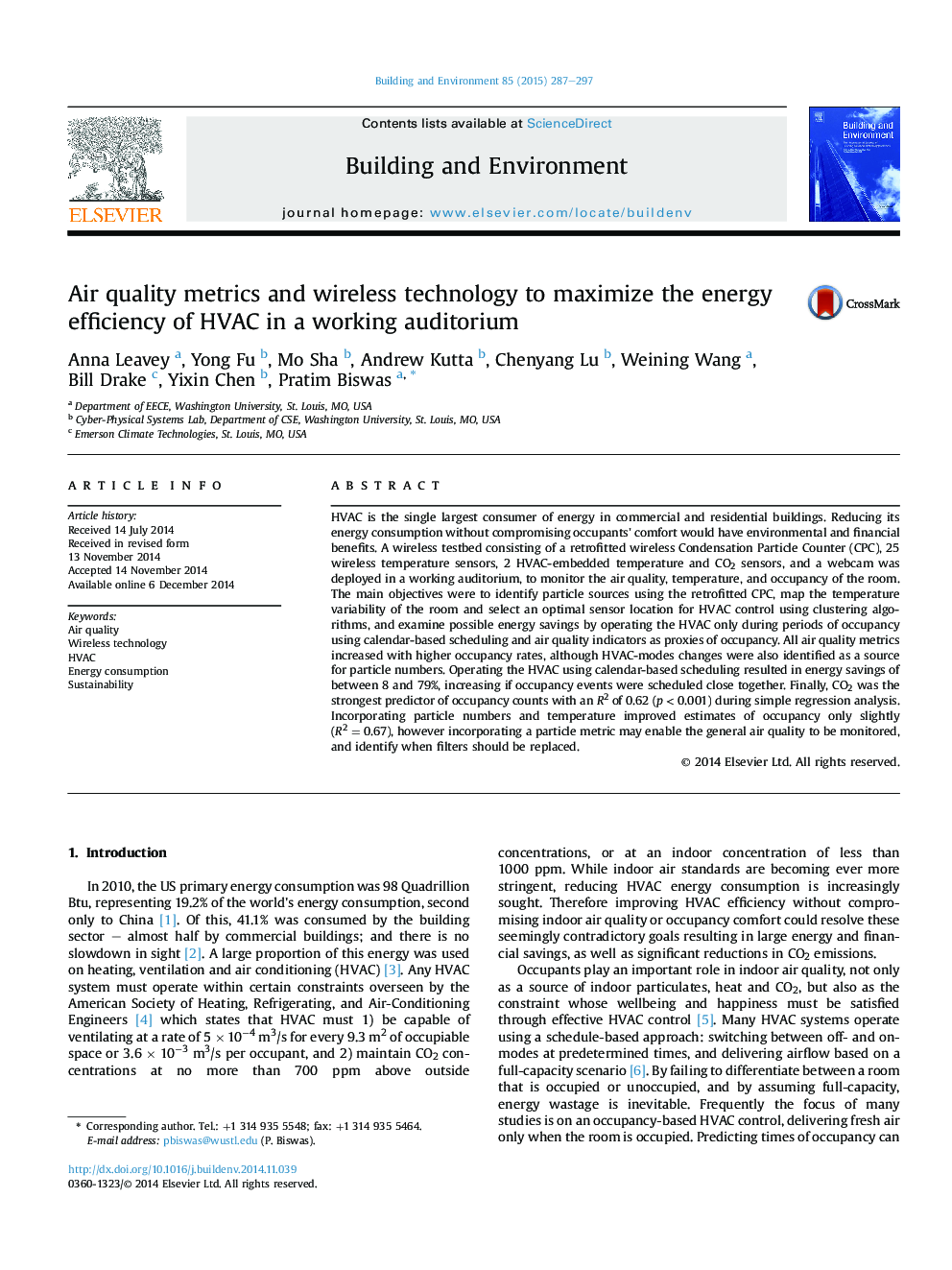| کد مقاله | کد نشریه | سال انتشار | مقاله انگلیسی | نسخه تمام متن |
|---|---|---|---|---|
| 247966 | 502537 | 2015 | 11 صفحه PDF | دانلود رایگان |
• An auditorium was fitted with a wireless CPC, temperature and CO2 sensors and webcam.
• Long-term continuous air quality, temperature, and occupancy data was obtained.
• Increased particle counts occurred during occupancy events and HVAC mode changes.
• Optimal temperature sensor locations were identified through cluster analysis.
• Calendar-based scheduling can result in significant energy savings of up to 79%.
HVAC is the single largest consumer of energy in commercial and residential buildings. Reducing its energy consumption without compromising occupants' comfort would have environmental and financial benefits. A wireless testbed consisting of a retrofitted wireless Condensation Particle Counter (CPC), 25 wireless temperature sensors, 2 HVAC-embedded temperature and CO2 sensors, and a webcam was deployed in a working auditorium, to monitor the air quality, temperature, and occupancy of the room. The main objectives were to identify particle sources using the retrofitted CPC, map the temperature variability of the room and select an optimal sensor location for HVAC control using clustering algorithms, and examine possible energy savings by operating the HVAC only during periods of occupancy using calendar-based scheduling and air quality indicators as proxies of occupancy. All air quality metrics increased with higher occupancy rates, although HVAC-modes changes were also identified as a source for particle numbers. Operating the HVAC using calendar-based scheduling resulted in energy savings of between 8 and 79%, increasing if occupancy events were scheduled close together. Finally, CO2 was the strongest predictor of occupancy counts with an R2 of 0.62 (p < 0.001) during simple regression analysis. Incorporating particle numbers and temperature improved estimates of occupancy only slightly (R2 = 0.67), however incorporating a particle metric may enable the general air quality to be monitored, and identify when filters should be replaced.
Journal: Building and Environment - Volume 85, February 2015, Pages 287–297
